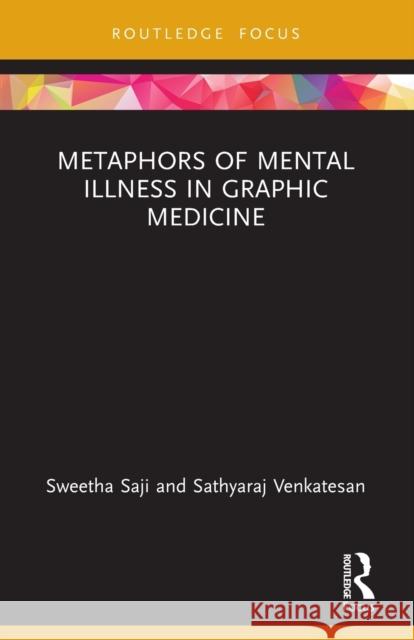Metaphors of Mental Illness in Graphic Medicine » książka
Metaphors of Mental Illness in Graphic Medicine
ISBN-13: 9781032163505 / Angielski
Metaphors of Mental Illness in Graphic Medicine
ISBN-13: 9781032163505 / Angielski
(netto: 98,75 VAT: 5%)
Najniższa cena z 30 dni: 95,66 zł
ok. 16-18 dni roboczych.
Darmowa dostawa!
This book investigates how graphic medicine enables sufferers of mental illness to visualise the intricacies of their internal mindscape through visual metaphors and reclaim their voice amidst stereotyped and prejudiced assumptions of mental illness as a disease of deviance and violence.In this context, by using Lakoff and Johnson’s conceptual metaphor theory (CMT), this study uncovers the broad spectrum of the mentally ills’ experiences, a relatively undertheorised area in medical humanities. The aim is to demonstrate that mentally ill people are often represented as either grotesquely exaggerated or overly romanticised across diverse media and biomedical discourses. Further, they have been disparaged as emotionally drained and unreasonable individuals, incapable of active social engagements and against the healthy/sane society.The study also aims to unsettle the sanity/insanity binary and its related patterns of fixed categories of normal/abnormal, which depersonalise the mentally ill by critically analysing seven graphic narratives on mental illness.
This book investigates how graphic medicine enables sufferers of mental illness to visualise the intricacies of their internal mindscape through visual metaphors and reclaim their voice amidst stereotyped and prejudiced assumptions of mental illness as a disease of deviance and violence.
In this context, by using Lakoff and Johnson’s conceptual metaphor theory (CMT), this study uncovers the broad spectrum of the mentally ills’ experiences, a relatively undertheorised area in medical humanities. The aim is to demonstrate that mentally ill people are often represented as either grotesquely exaggerated or overly romanticised across diverse media and biomedical discourses. Further, they have been disparaged as emotionally drained and unreasonable individuals, incapable of active social engagements and against the healthy/sane society.
The study also aims to unsettle the sanity/insanity binary and its related patterns of fixed categories of normal/abnormal, which depersonalise the mentally ill by critically analysing seven graphic narratives on mental illness.











